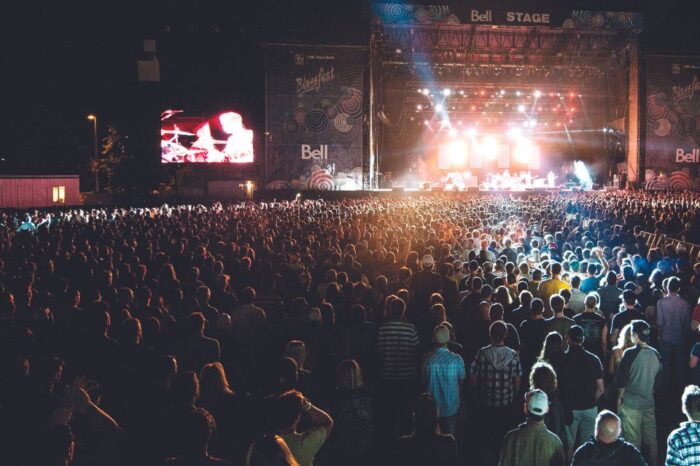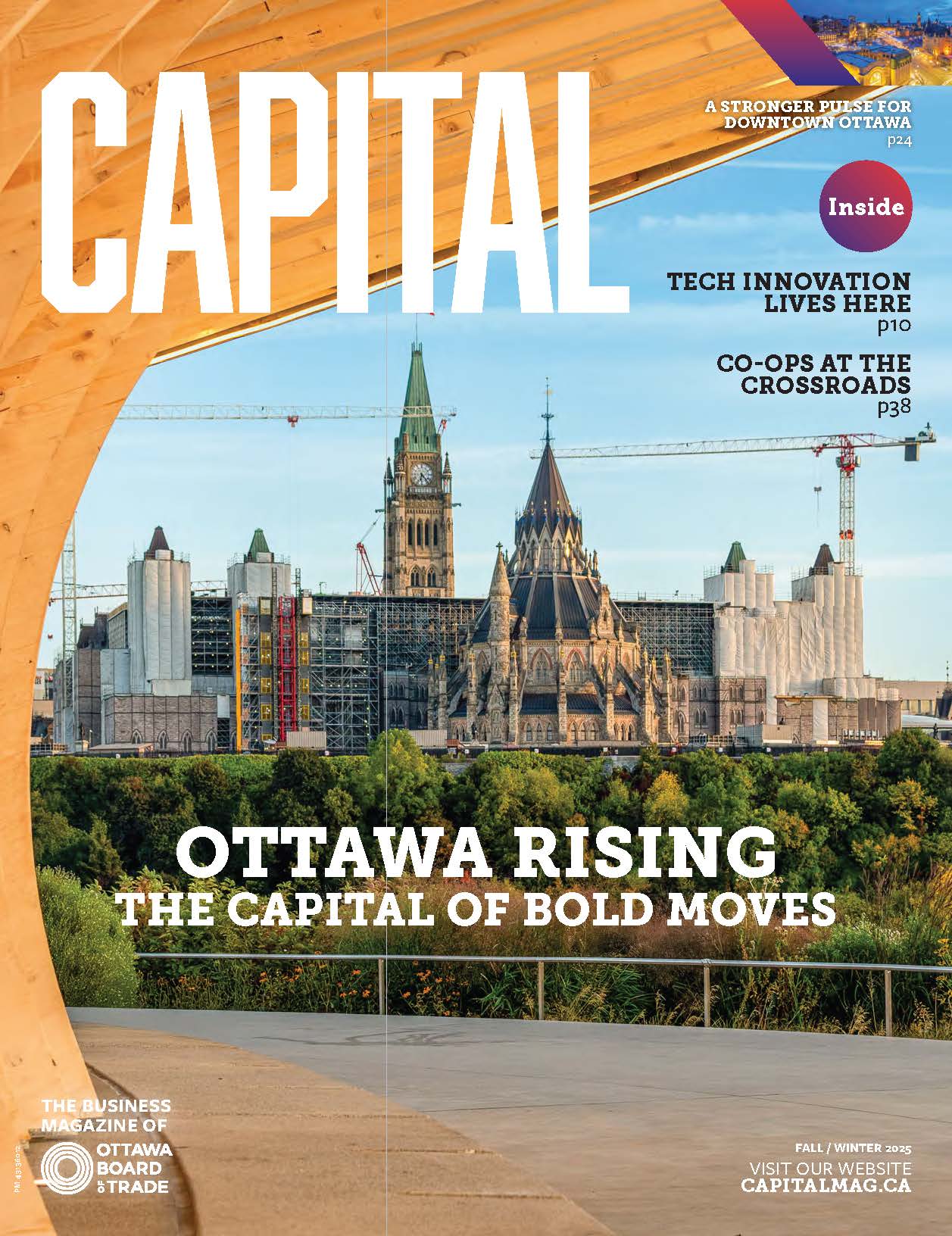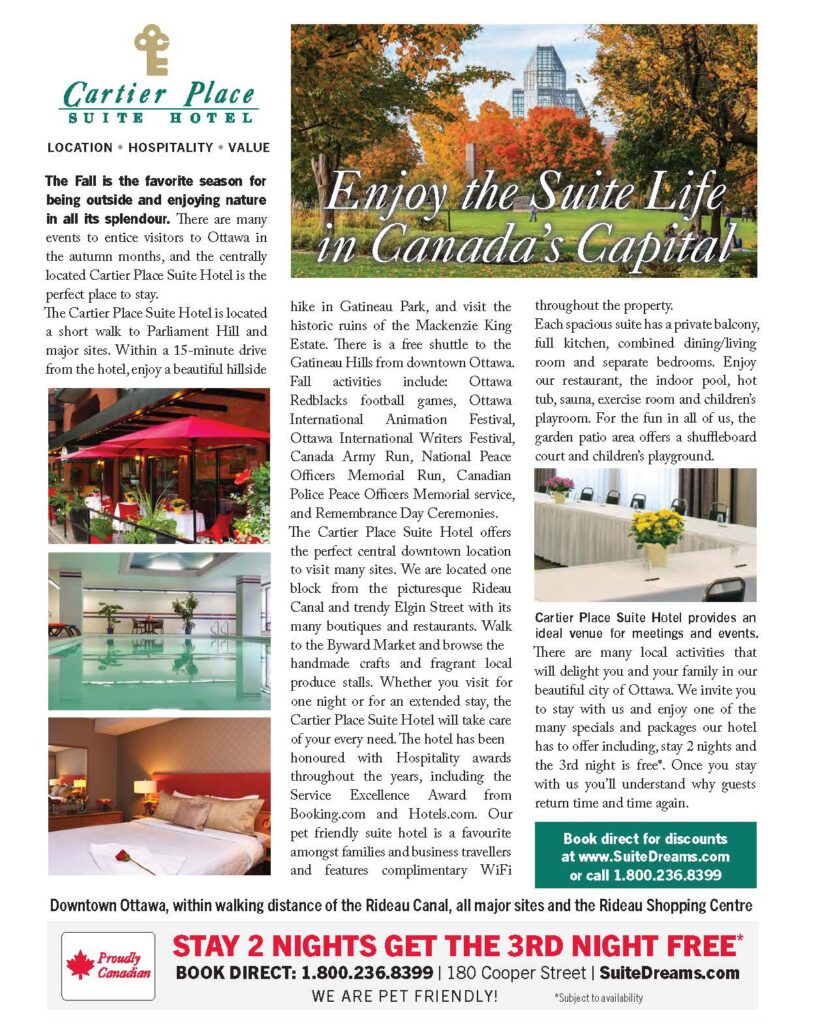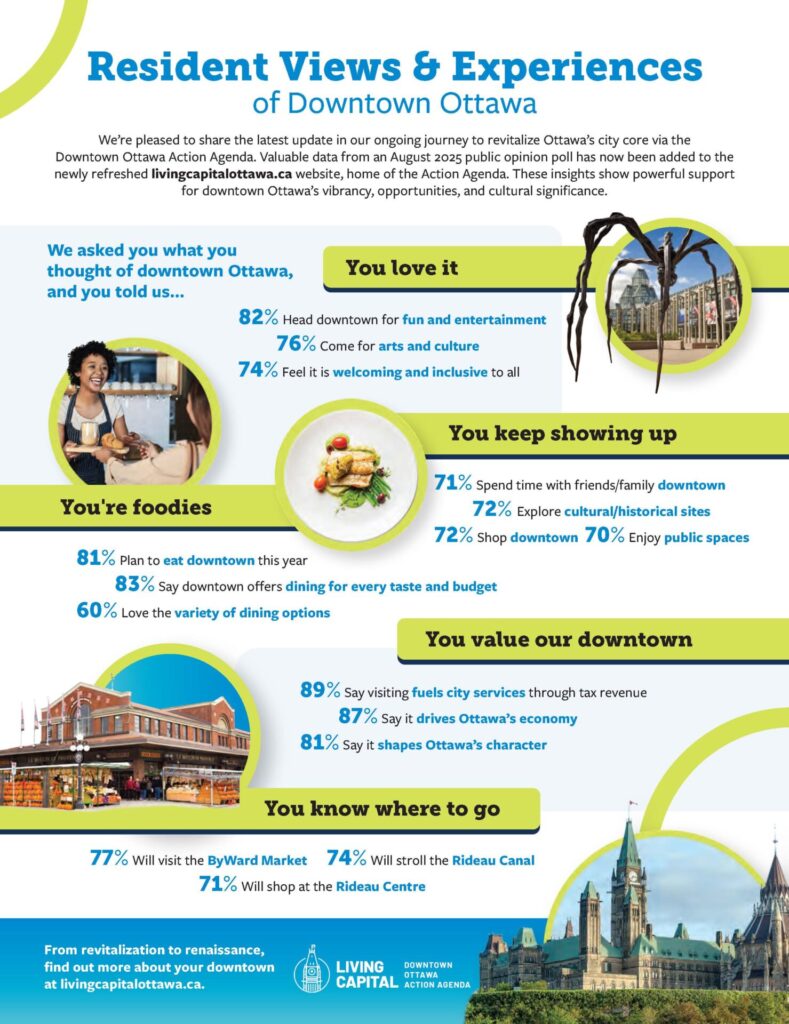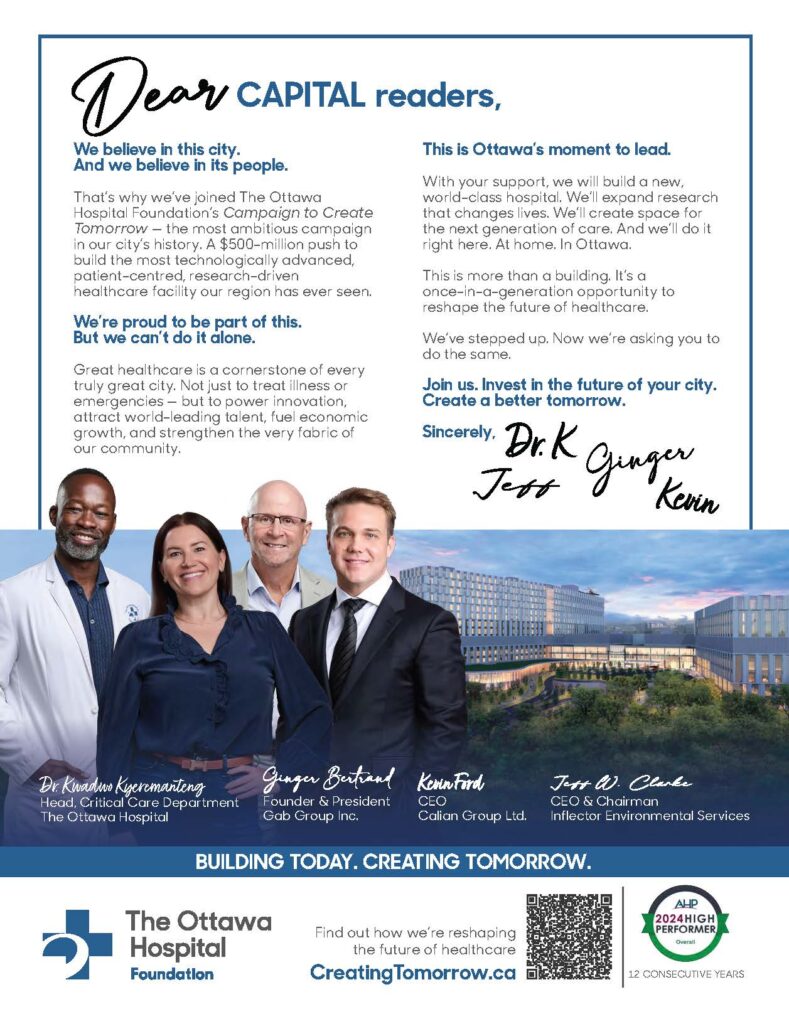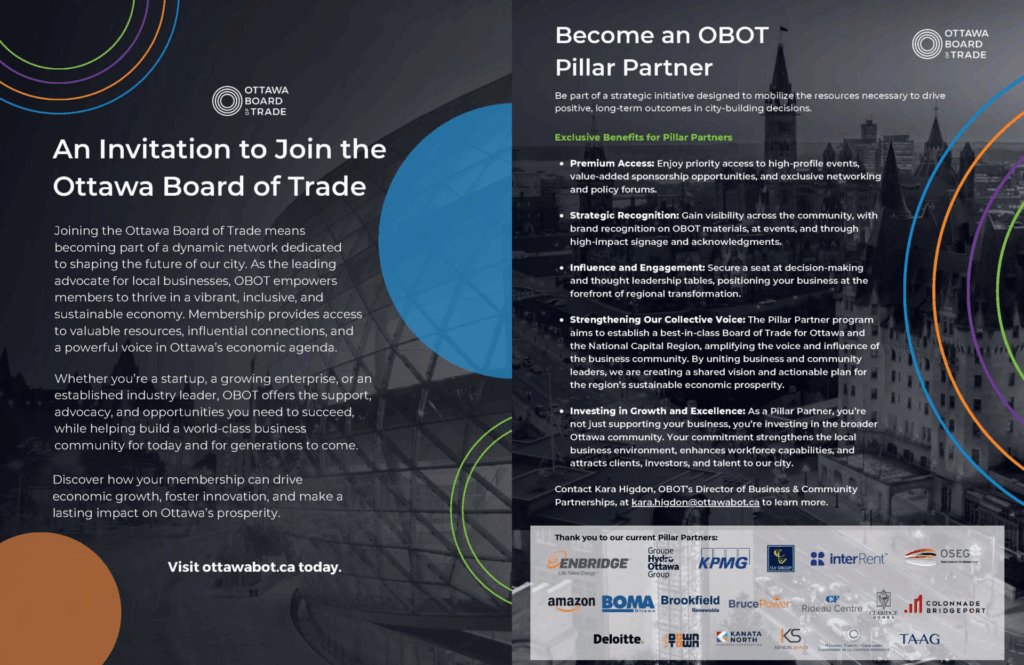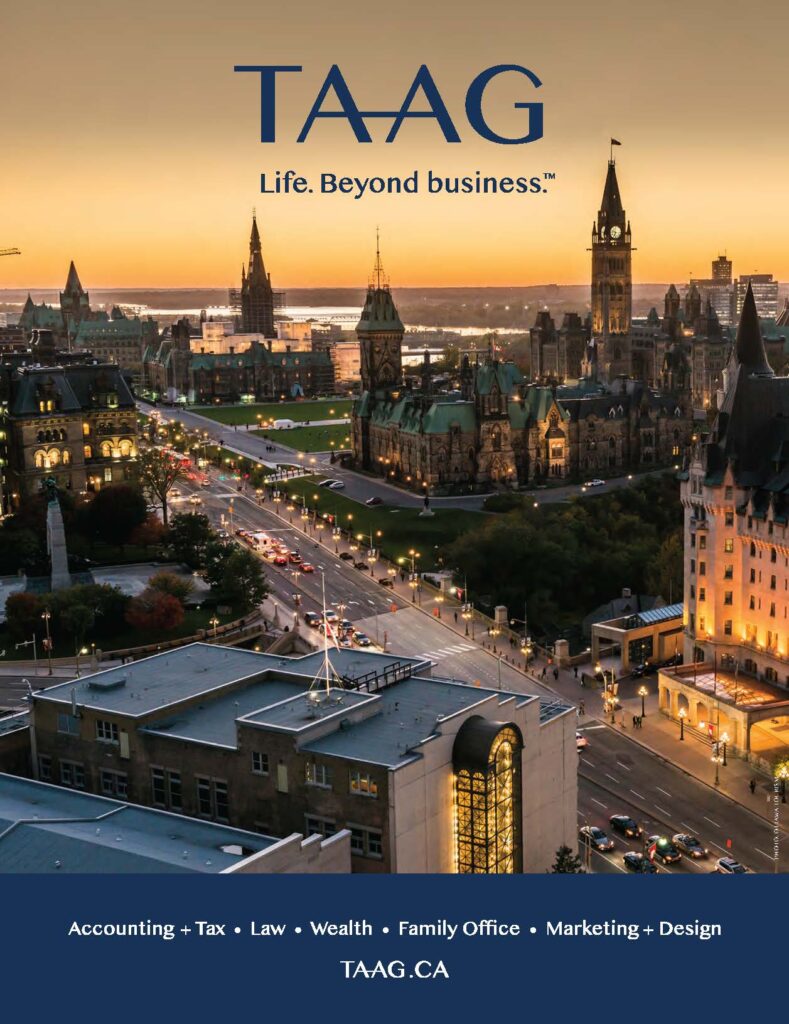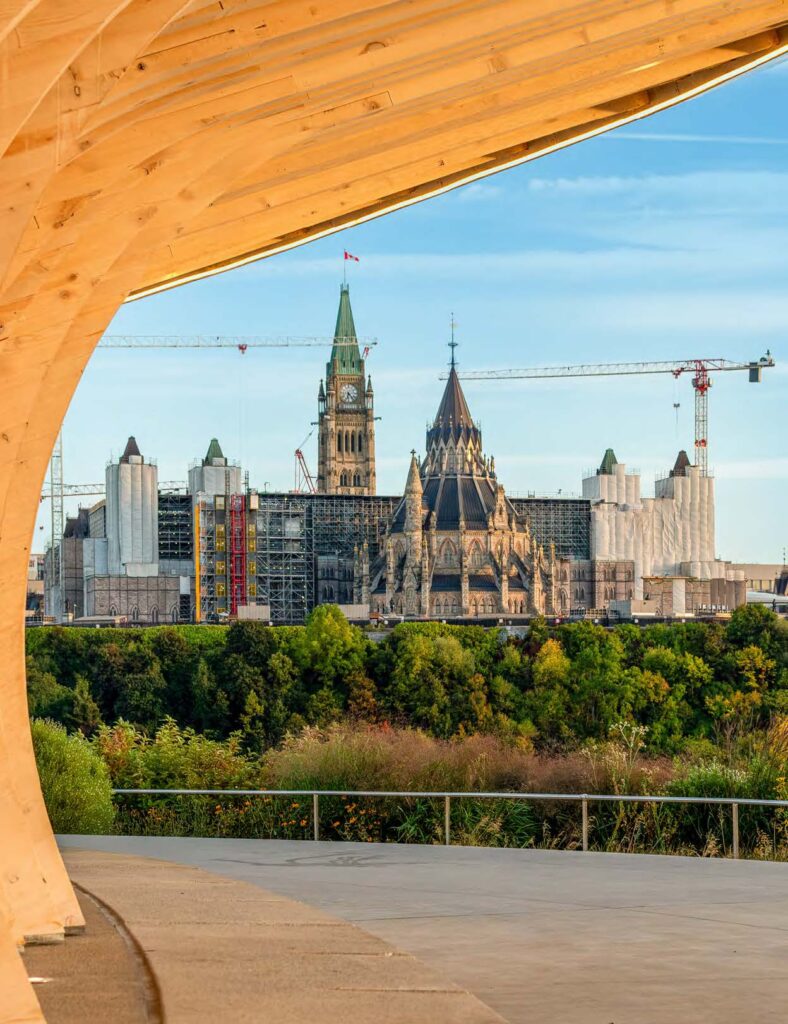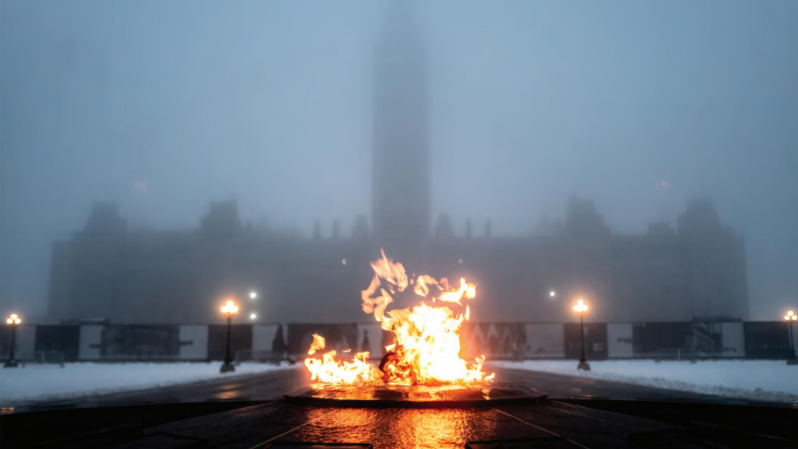The art of rebuilding a city

Rebuilding Ottawa after the pandemic will require diligence, but the major infrastructure projects underway can help.
By Jennifer Campbell
MAJOR METROPOLITAN AREAS ARE IMPORTANT to a country’s GDP and essential to the character of a country. They are also cultural and economic hubs. Ottawa may have different challenges in rebuilding its downtown core after the exodus of federal public service in this post-pandemic era, but many of its challenges are shared with major metropolitan centres across Canada. Both of these things became clear at the Ottawa Board of Trade’s City Building Summit 2024, when leaders from Vancouver, Calgary, Montreal, and Halifax came together for the Why Downtown portion of the event.
Mary Rowe, president and CEO of the Canadian Urban Institute, who led the first session showed a photo of an apple and reminded summitgoers that “an apple rots from the core,” and that’s why we need to care about downtowns.
“You tend a city the way you tend a garden,” Rowe said, adding that downtowns attract people not just for work, but also experiences. So as the work aspect erodes, the experience factor has to ramp up. To that end, Rowe made the point that while Ottawa does have the challenge of being a government town, it also has a huge number of assets because it’s the nation’s capital.
Other cities weigh in
Jane Talbot, president and CEO of Downtown Van, said she expects Ottawa is facing social, affordability, and mental health and addiction issues. The other thing her organization spends an inordinate amount of time on is permit work—to help businesses do business.
“I think the will is there in every conversation we have but it does seem to be challenging to reduce those barriers to doing business,” Talbot said. Calgary, too, has social inequity issues, but it is at a great moment in time in terms of the investments it’s making downtown.
“Downtown Calgary isn’t a place, it’s the place,” said Mark Garner, executive director of the Downtown Calgary Association, adding that he thinks Calgary is leading North America on residential conversion, and will soon be leading Canada for arts and culture investments. “We’re talking hundreds of millions of dollars, if not billions.”
Glenn Castanheira, executive director of Montréal centre-ville, noted that Montreal had to rebuild after the referendum in the 1990s. He also listed the city’s assets, the first being that downtown Montreal is one of the country’s, and indeed the continent’s, densest cultural districts.
“Fifty percent of all cultural tickets sold in the province of Quebec are sold in this district, which is one kilometre square,” Castanheira said. “We’re not just a central business district, we are also Canada’s largest university cluster with 300,000 students in our downtown. And we also have Canada’s fastest growing demographic when it comes to downtown.”
For his part, Paul Mackinnon, CEO of Downtown Halifax Business Commission, said Halifax chugs along and isn’t suffering, but would benefit from a downtown revitalization strategy. He acknowledged that, like Ottawa, Halifax is large geographically and therefore includes many rural residents. But as Rowe said, we should all be in this together.
“We’re all in the same ecosystem; we’re all interdependent,” Rowe cautioned.
The panelists all weighed in on the mental health issue cities are facing, and Talbot said cities need all three levels of government to work together and to provide funding. “It’s urgent and it has to happen,” she said.
The Parliamentary precinct and federal lands
The Parliamentary precinct and federal lands The Summit afforded an opportunity for an update on what’s happening with the Parliament Hill Rehabilitation. Jennifer Garrett, acting assistant deputy minister at Public Services and Procurement Canada, said the key part of the $3 billion at the moment is the restoration of the Centre Block and the construction of a 3.5-storey structure under the front lawn, which will include a Parliamentary welcome centre, public exhibit space, theatres, and the first-ever public café.
Mark Quinlan, assistant deputy minister of real property services at Public Services and Procurement Canada, told the group he’s responsible for three million square metres or 50% of the federal government office space in Ottawa. In Budget 2024, the federal government said it would “right-size” the federal footprint and reduce office space by 50% over the next 10 years.
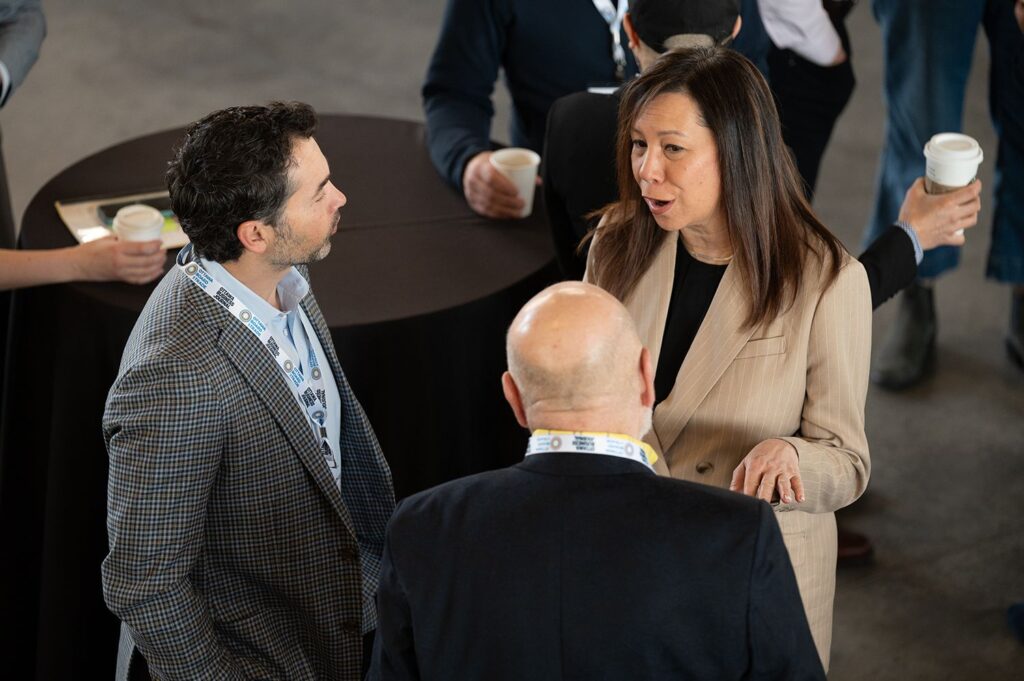
Sueling Ching, President & CEO, Ottawa Board of Trade
“My job is to take six million square metres of office space down to three million square metres,” he said, adding that this is possible mostly due to hybrid work, but also because current office space allocation has never accounted for people being on vacation or away on work trips.
“Now we’re planning for three days in the office for 100% of employees,” Quinlan says, adding that the office space the federal government will keep will have higher occupancy and that these efforts will save $1 billion in federal spending and have a positive impact on the environment.
Stéphan Déry, president and CEO of the Canada Lands Company, noted that Quinlan’s project of reducing the office space the federal government occupies, will free up a lot of buildings for housing or mixed-use property.
Canada Lands Company is at arms-length from the federal government, which is its sole shareholder.
“CLC can take part in reviving downtown Ottawa and all the downtowns in fact,” he says. “We have 27 properties across the country, 23 major projects across the country and attractions such as the Montreal Science Centre and the CN Tower in Toronto.”
Déry discussed some current projects, including one on Carling Avenue, where 600 affordable housing units will be built in 2024.
Energy objectives
As Ottawa goes about its city-building efforts, there are energy considerations that must be factored in.
“As we are making these decisions around infrastructure, physical assets and filling the need for housing, how do we integrate environmental and energy objectives into the plan?” asks Sueling Ching, president and CEO of the Ottawa Board of Trade. “We can’t do these things in silos.”
Those considerations were covered by Michael Cleland, executive in residence with the University of Ottawa’s positive energy program.
A confluence of major projects
The city of Ottawa is rich in major infrastructure projects that are taking place right now. The Summit offered snapshots of five of them. Those didn’t include Lansdowne 2.0, which is currently being envisioned by the National Capital Commission and its partners.
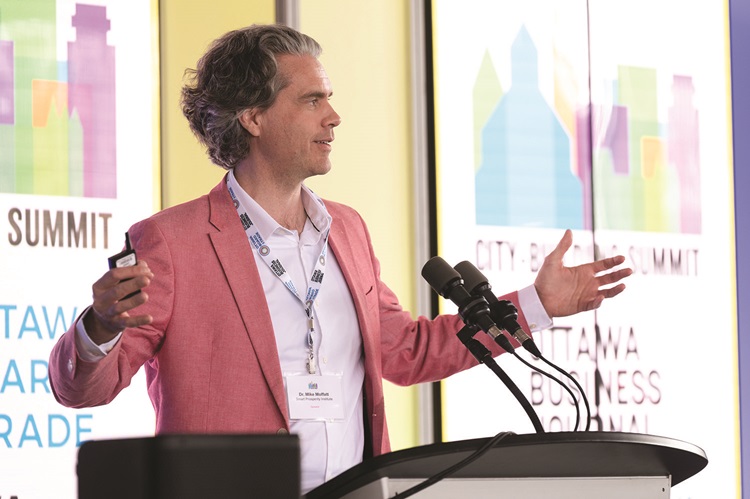
Dr. Mike Moffatt, Senior Director of Policy and Innovation at the University of
Ottawa’s Smart Prosperity Institute
NCC’s core area plan
Alain Miguelez, vice-president and chief planner for the National Capital Commission, spoke about the NCC’s plans for a redevelopment along the Ottawa river, near where the canal locks connect to it. He talked about a mini-Lebreton Flats on the Gatineau side with potential for bars, restaurants, and housing. A similar development could happen on Lady Grey Drive in Ottawa.
“It’s a street that is between Sussex Drive and the water,” Miguelez said, adding that the NCC considers it a way to extend the ByWard Market towards the water.
As it goes about developing these areas, he said the NCC is keeping in mind such things as beauty, sustainability, vibrancy, animation, tourism and the local economy.
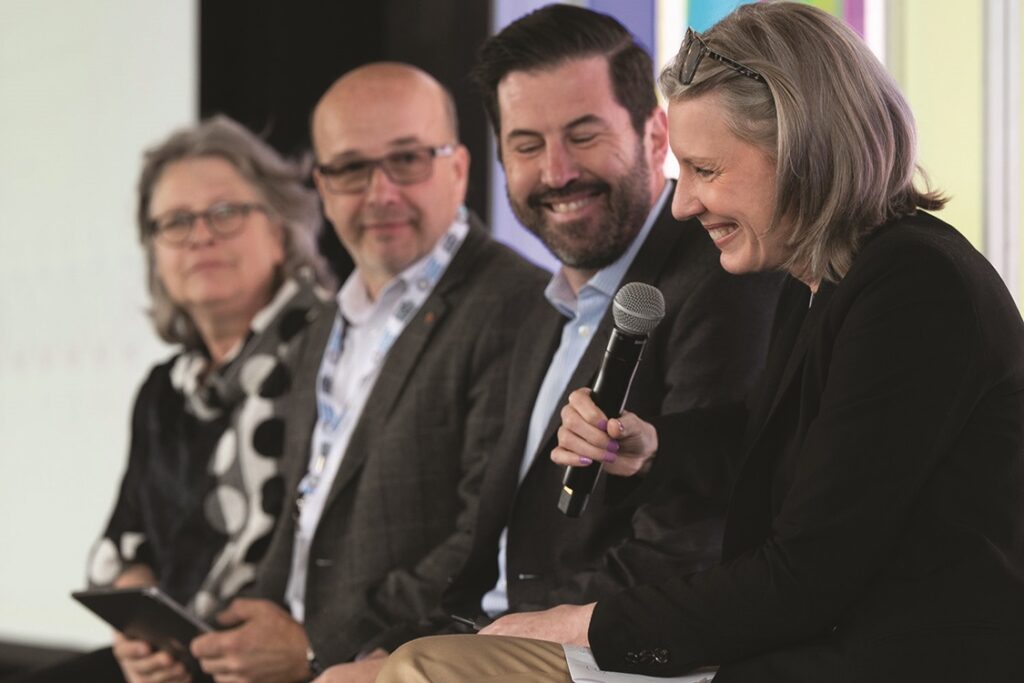
(From right to left): Jennifer Garrett, Acting Associate Assistant Deputy Minister, Science and Parliamentary Infrastructure, Public Services and Procurement
Canada; Mark Quinlan, Assistant Deputy Minister, Public Services and Procurement Canada; Stéphan Déry, President & CEO, Canada Lands Company; Mary Rowe, President & CEO, Canadian Urban Institute (panel moderator)
Light rail rollout
Michael Morgan, director of the rail construction project for the City of Ottawa, updated summit-goers on the LRT extension, which he said was a 15-year, $7 billion project. He promised there will be trains running to Trim Road in Orleans by the end of this year. He talked about a number of stations, including the west-end tunnel being built along Kichi Zībī Mīkan parkway to Richmond Road, and about how the city is growing in tandem with the LRT.
“It’s absolutely unlocking the city,” Morgan said, adding that it’ll connect all the universities, all of the shopping centres and the downtown core to the rural areas.
YOW rebounding post-pandemic
Ottawa airport president and CEO Mark Laroche had much to report, including that the airport hit its target of four million passengers in 2023, and had net earnings of $10.8 million, which will help it repay some of its $100-million pandemic debt. It continues to aim for net-zero emissions by 2040, and is considering a solar farm project to help electrify the terminal as part of that goal.
Laroche mentioned Air France’s direct flight to Paris will start operating daily in June, that there’s a terminal-attached Alt Hotel being built, and the LRT station is set to open this summer. He also mentioned the 150,000 square foot Porter hangar that was completed last year.
A new Civic
As the new Civic Hospital is under construction, CEO Cameron Love says his team is very focused on how to reshape health care for the community for the next 20 to 70 years. The first phase of the building is about 2.5 million square feet and it will reach 4.5 million square feet by the time it’s finished. It will start with 641 private rooms with their own washrooms, and will include two research and innovation buildings. The parking garage construction is already under way. Next will be the central utility plant, then the main hospital building, both of which will start in the next 15 months. After that, it’ll be the R&D buildings followed by the Heart Institute. The first phases should be completed over the next six to seven years.
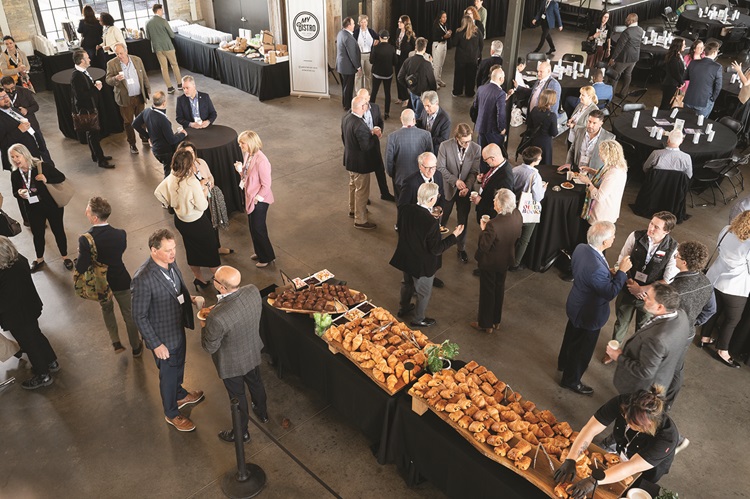
Attendees at City Building Summit 2024
A downtown arena?
“A downtown event centre is about city building,” said Ottawa Senators president and CEO Cyril Leeder. “It’s about doing the right thing, taking the right steps at the right time to revitalize our downtown.”
He said it’s the number one file on the management team’s desk and is looking at an 800,000 square foot centre. Comparable projects have cost $1.2 billion and required approximately 7,000 fulltime workers. Asked where the arena might be, Leeder said the only location the Senators are currently considering is LeBreton Flats.
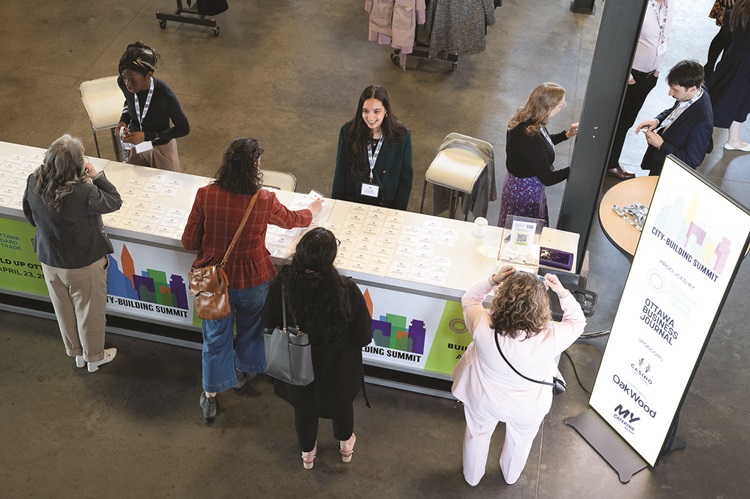
Registration at City Building Summit 2024
